I can finally tell you about my book, A Physical Education
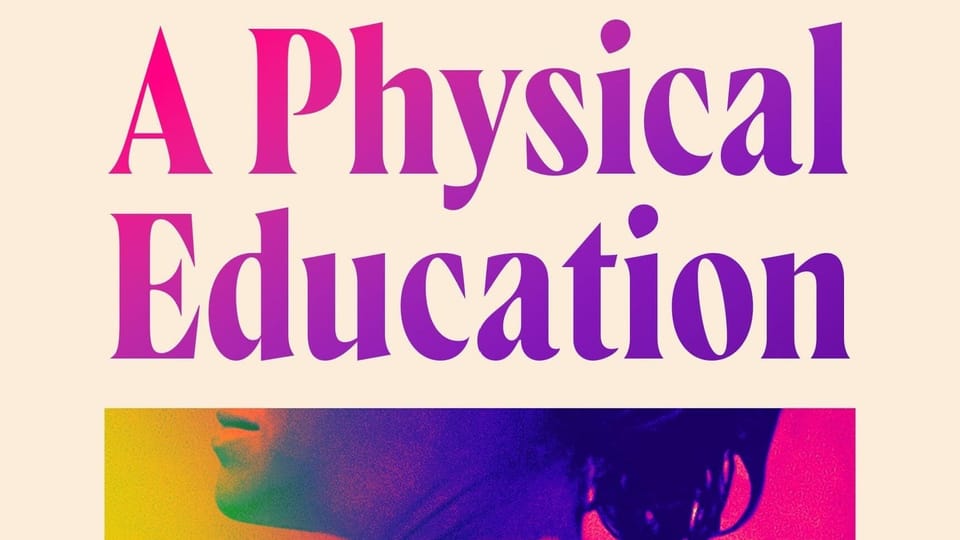
"This is less of a book about 'lifting is good,' and more about all the ways lifting strikes a blow at all that is evil in our modern world."
Many of you who have been hanging around here for a while may recall that I mentioned I was working on a new book here and there in the last couple of years.
Well!—we have finally sent that book, A Physical Education, off to production college, boarded her on the production train, put her on the production rocket and sent her to the printer moon. I no longer have to knock on wood and say “lord willing” every time I speak of it, in case it somehow managed to not happen still, after all this time.
AND, I finally get to tell you more about this book beyond the barest of one-line summaries.
First, here is the beautiful cover:
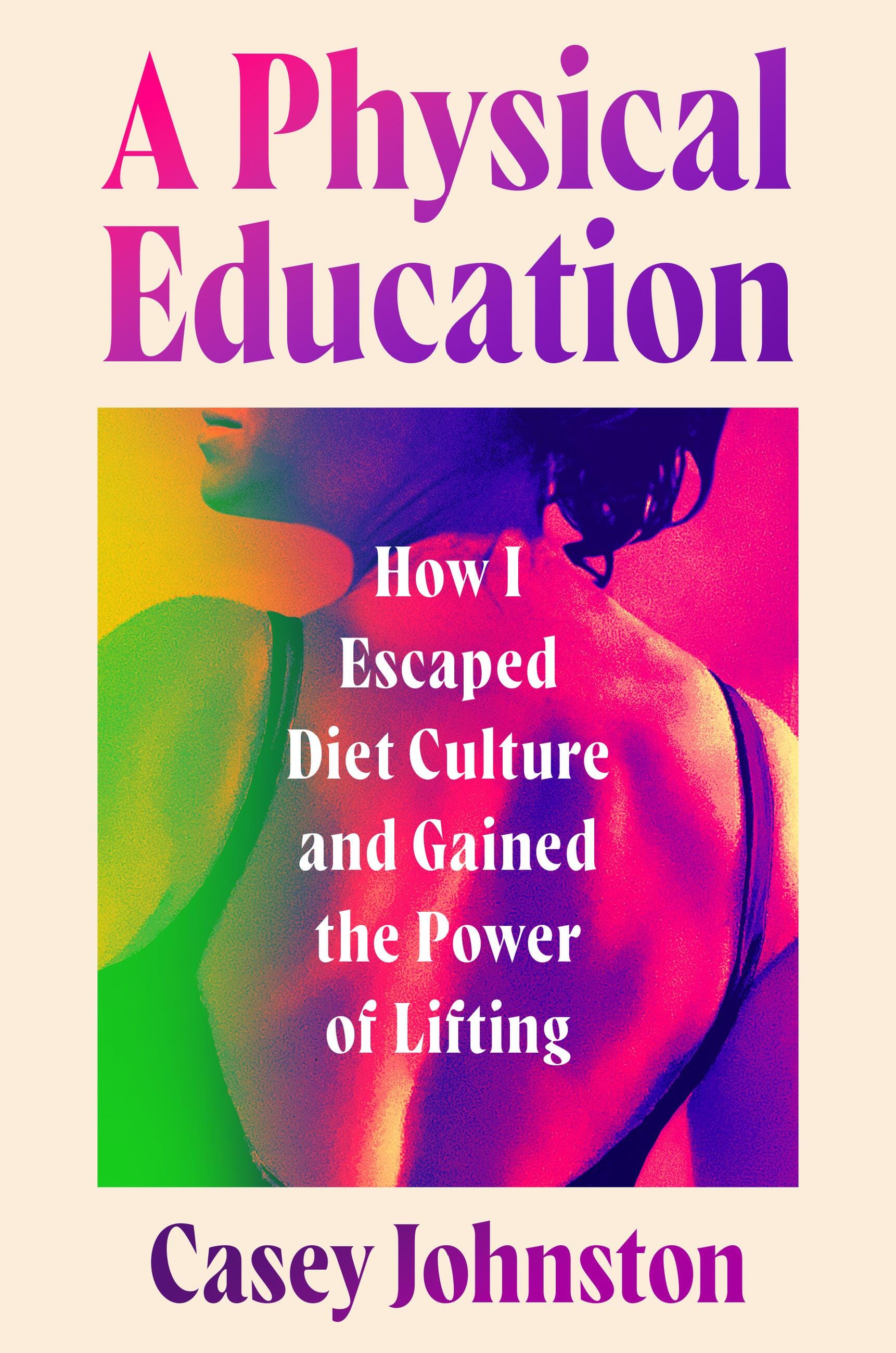
Second, here is the release date: May 6, 2025.
Third, here is a longer description of what it’s about:
A Physical Education traces Casey Johnston’s journey of calorie restriction and obsessive cardio—making herself small in almost every way—to finding healing through the (unexpected) practice of lifting weights. As she progresses, carrying groceries and closing heavy doors become easier. As she diligently practices checking in with how she feels, she begins to question not only how she has treated her body, but how she sees herself and the world. This growth also fuels a deeper understanding: how the mainstream messaging she received about women’s bodies has seeped into almost every other area of her life.
Combining wit, rage, and a reporter’s eye for detail, Johnston recounts how she learned the process of rupture, rest, and repair—not just within her cells and muscles, but within her spirit. A love letter to the science of female strength, this is a book for anyone who’s ever longed to return home to their own body.
And that’s not all: With all these little ducks in a row, pre-orders are officially open. There will be a physical hardbound book, an e-book, AND an audiobook, read by yours truly. If you want to buy multiple formats, I’m certainly not going to be the one to stop you.
Pre-order the book here! Note that the publisher is currently holding a sitewide 30% off sale, so with the code CYBER2024, the hardcover is only $21! A steal! Run don't walk!
And now, as is my wont,
AN FAQ
I’m a voracious reader of all your columns, even going back to The Hairpin days. Is there any point in me reading this book?
Unequivocally yes.
My columns are often on the long side, but you can really only do so much, even across 2,000 or so words. This book contains lots of new information and, more importantly, synthesizes new science across a number of disciplines to create the fullest possible (and to me, most exciting) picture of the discord and harmony that can be created and destroyed between body, brain, and soul via our relationships, food, and physical being in the world.
If it could have been done in a bunch of columns, trust me, I would not have written a book; I would have just fanced up a book’s worth of columns and published them as The Collected Advice of the Swole Woman, or some such. Even if you know most of the ins and outs about lifting, there is new information in there for you. If you yourself feel very attached to lifting/exercise but often at a loss to explain why, this book will put words to your feelings.
I also tend to refer to my own personal history only obliquely in my columns, but this book draws heavily on my own arc from devoted dieter/extreme lifting skeptic to where I am now to build these arguments, if for no other reason than to demonstrate how personal this is to me. I could have written a book without any of myself in it (and all things considered, probably would have preferred to; I am secretive by nature), but it would not hit the same. My editor keeps using the word “ambitious” to describe the scope of the book, and I really have to agree with her.
I’ve never heard of you before; why should I buy a whole book instead of reading all your free online content about lifting?
Well, not all of it is free; for the last few years, the really good stuff has been published to She’s A Beast paid subscribers only.
But that aside, I believe that our relationships with our bodies, minds, foods, and physical movement are deep wells of feeling and experience for all of us. I find it particularly rude that the depth and breadth each of us contains are often denigrated and shoehorned into being dealt with in 30-second social media posts, or 8-minute workouts.
This book takes the opposite approach, and the story is designed to reclaim and dignify the whole of the experience of physical existence, especially as it ties into our feelings and culture. If you are still working on building or re-building your own relationship to your body, to physical movement, to food, especially if the larger cultural conversations around these things tend to alienate you and fill you with despair and discomfort, this book is for you.
My columns over the years have tackled a lot of discrete topics with practical advice. But there is a much bigger picture into which this all fits together, with many little-discussed veins (biologically, culturally) that run deep into our subconscious. This bigger picture validates the daily resistance we have to mount against being told how to feel, to push our feelings down and submit to the alleged indignity of being physically alive. But it also gratifies the experience of learning to reject that grind and develop your own relationship with caring for your physical self.
As I mentioned above, if I’d just wanted to put a bunch of digital columns to physical paper, I would have done that.
You are impudent, yet you intrigue me. How long is it?
Less than 300 pages. A very respectable length in terms of bang for your buck. A book like this could be easily twice as long, given the ground I cover. But I’m all about respecting your time, so we paid special attention to creating a sense of fluidity and movement through the length of it. The chapters are even pretty short. Not only that, but my greatest hope is that reading it will be a grounding experience that owners of the book can return to again and again.
Is it sad? I really can’t take anything too heavy right now, or maybe ever again.
I’ll be honest: I’ve been through some stuff that comes to bear in the experience of my lifting-driven journey. There is abuse and trauma. However, what is also present is my irreverence and indomitable spirit, two things that I feel can be specifically rehabilitative to those situations, not just for me to experience, but for people to read about. I aim to neither sweep these experiences under the rug, nor to submit to them. All of this is a part of who I am, for better and for worse, and importantly, not just one or the other.
I’m loathe to tell anyone how they should react to this book. It is important to me, as an artist, that you have your own journey with it. But let’s not forget in this moment, first, how witty and hilarious I am, and second, how respectful of the reader and not-manipulative I am. I’m not trying to do the Surprise Pixar Emotionally Destructive Slap. I will take care of you and me, spiritually.
Is it a tedious and lengthy lecture about why I should work out? I already know I should work out. I may be lazy and/or have better things to do with my time, but I’m not stupid.
Very fair question! I am biased, but I don’t think so.
I like to think this book is for people who are not terribly moved by either the health or aesthetic impacts of working out. Most people who talk about exercise and body stuff don’t engage with them on a very deep level, because they don’t have to; seeding guilt about “taking care of yourself” or “not being hot enough” works well enough to sustain the fitness and weight loss industries to the tune of billions of dollars. But I don’t think that’s the relationship any of us really want to have with ourselves.
When I found this different way of approaching exercise and food and my body, I was shocked to learn that there was this whole other angle to physical existence that affected my perception of the world on an intellectual, philosophical, emotional, and nearly spiritual level. And the important part was precisely that it defied so much of the nagging out there. If you would like to see those nags undermined, to understand how a different way is possible, and to feel overall lighter about this, this book is for you. This is less of a book about 'lifting is good,' and more about all the ways lifting strikes a blow at all that is evil in our modern world.
Plus, if you have latent guilt about not working out, there’s hardly a better way to feel like you’re doing something about that without physically doing anything than “reading a thoughtful/exciting book about working out.”
Is there a lot of science? Or is it more storytelling?
It’s a mix of both, which is a tricky balance to strike, and, as my editor says, ambitious. But I and we have worked strenuously on tempering these two elements. We aim for the people drawn to storytelling to find it delightful to experience a few science facts; we hope the science people get a dose of emotional grounding for the information they love. I care about both of these groups of people, and I hope it shows.
Will it teach me how to lift?
There's a lot of good info about that, but no; that's what LIFTOFF: Couch to Barbell is for.
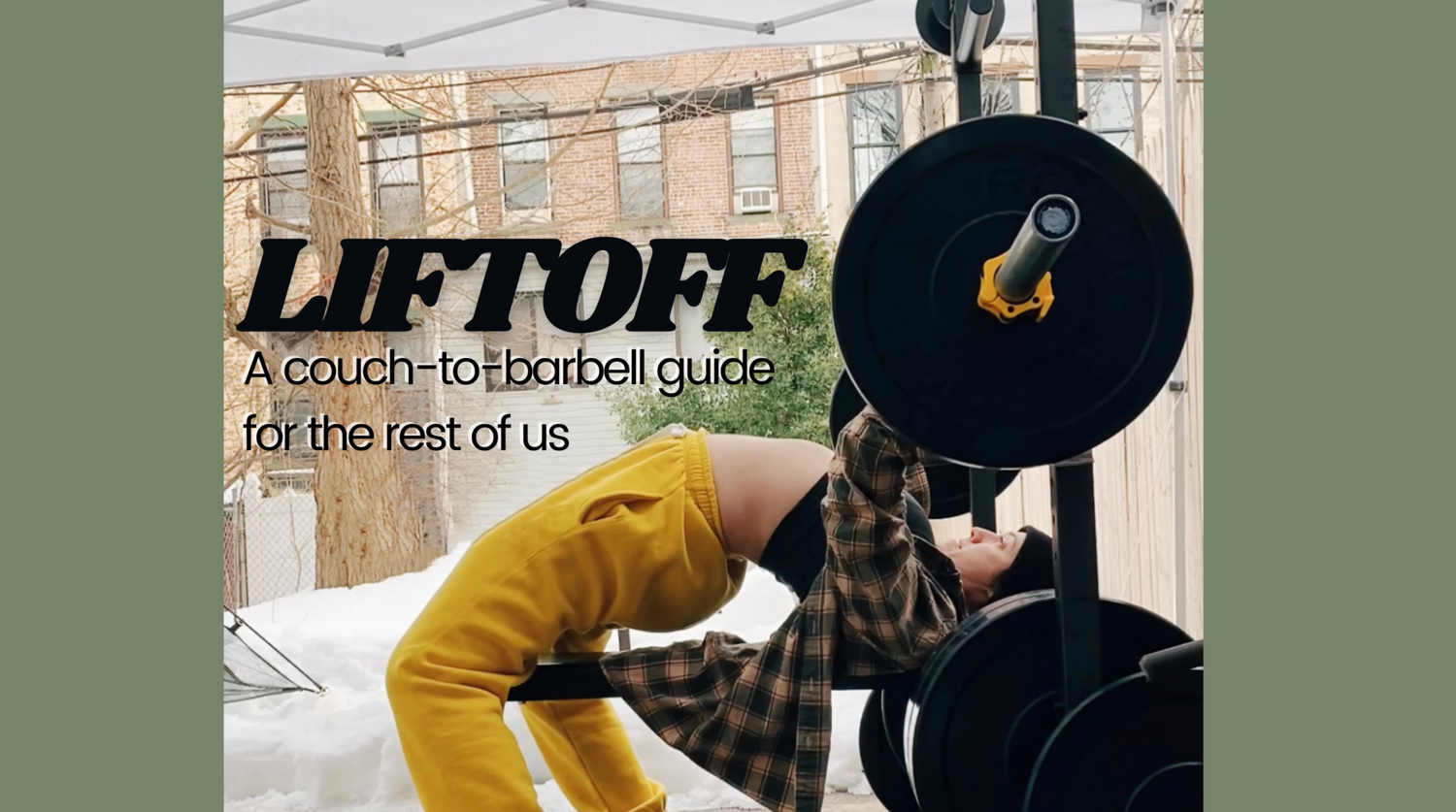
What’s something in the book I wouldn’t know to ask about, but would probably appeal to me?
There is a fair amount in there about what it was like to be in my mid-twenties in New York while working in media, circa 2012-18! I think that was a special time and place, personally and culturally. There’s a rooftop party in the Lower East Side. Gamergate. Dating. The iconic Bushwick neighborhood gym I first started lifting at, that has since closed (!). I didn’t set out to write a lot about any of these things, but it kind of delights me how much of that texture ended up in there.
Let’s suppose I’m not convinced by you, but might be convinced by a third party. Has anyone else read it?
“A Physical Education is a profoundly engrossing journey of how one woman stepped into her power, literally and metaphorically. Casey Johnston is our Virgil through the weightroom, seamlessly blending memoir, history, and science. In lucid prose, Johnston shows how strength training is an exit ramp off the hamster wheel of diet culture and antidote to the shame and isolation so many women experience. Full of heart and humor, this book made me want to get stronger.”
—Elizabeth Greenwood, author of Playing Dead and Love Lockdown
Thank you for your patience in explaining all of this to me; I’m duly convinced! How and where can I buy it?
Thank YOU for asking—you can pre-order it from your favorite retailer here, or wherever you buy your books. I’m very excited for you to finally read it.
For publicity inquiries, please email Staci Burt at Staci.Burt@hbgusa.com.
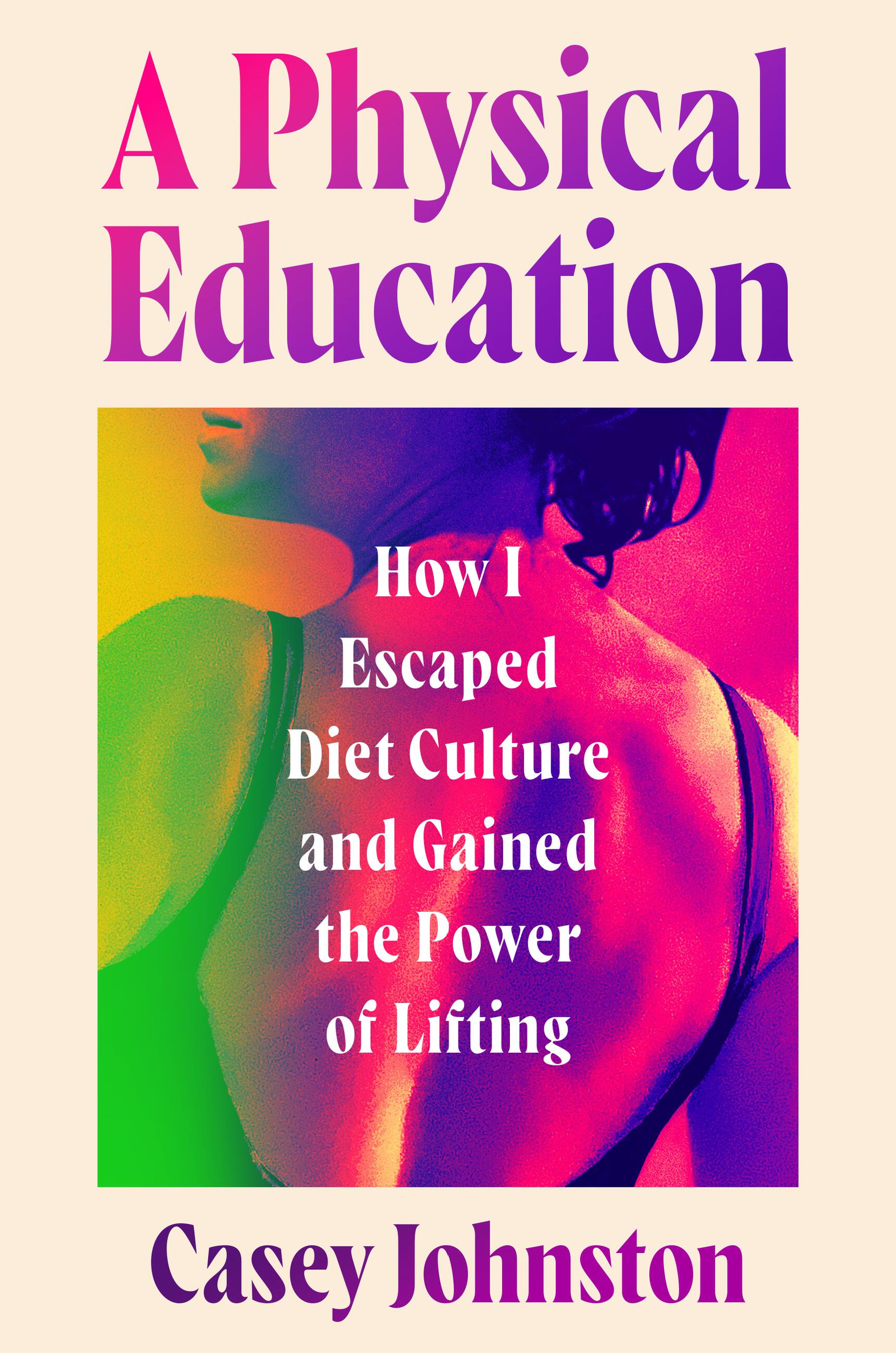

Eat
~Liftcord Pick of the Week:
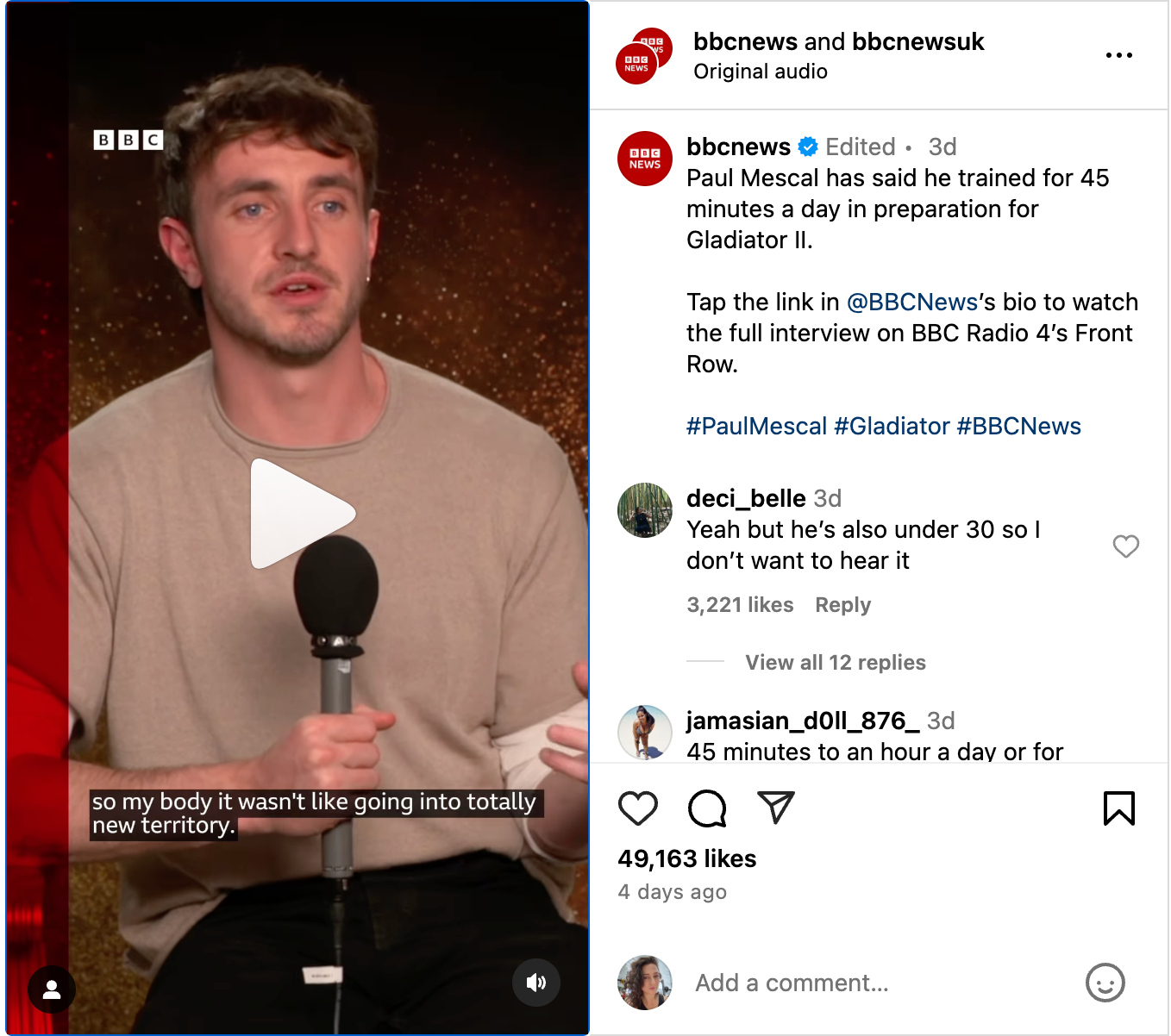
Actor Paul Mescal with the truth: Mescal told an interviewer he trained only 45 minutes a day for Gladiator II, to which the interviewer said, in so many words, “fuck off.” And then Mescal said:
No I know, but this is the thing, I don’t generally believe when actors say they’re in the gym for three hours and eating 9,000 calories. But what I’m saying is, is like, I was lucky that I had a background in sport, before we started this, so my body, it wasn’t like going into totally new territory.
Allow me to fill in some details: Paul Mescal was a Gaelic footballer and played into college, until he got a jaw injury. What he is referring to is what we call “training history,” where it is always easier to gain back and maintain muscle after you’ve built it the first time (and honestly, if you kind of know what you’re doing with training, and of course have decent genetics, you know you don’t need to spend hours and hours in the gym to get a good workout). Mescal was also performing on stage nightly during his training, so he was getting some cardio, too. Not to put words in his mouth, but if he meant to say that celebrities saying they worked out for three hours a day and ate 9,000 calories may often be a cover for taking steroids (or only possible due to steroids), he wouldn’t be wrong.
Paul Mescal, you are alright in my book; please come sit with us in the ranks of artist girlies who are deadlifting.
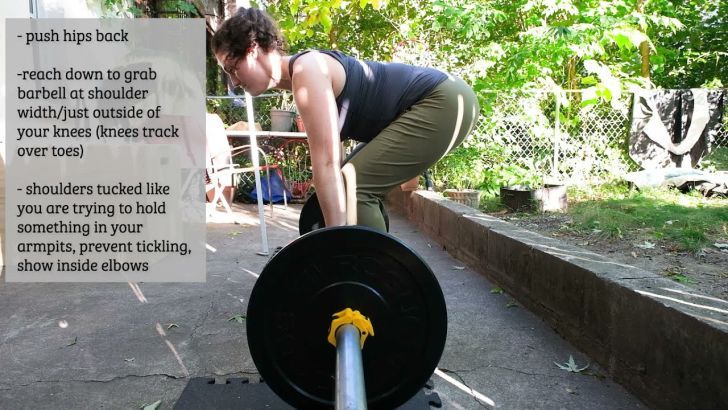
~
Muscles and muscle-building are once again the biological GOATs:
MIT engineers have found that exercise can also have benefits at the level of individual neurons. They observed that when muscles contract during exercise, they release a soup of biochemical signals called myokines. In the presence of these muscle-generated signals, neurons grew four times farther compared to neurons that were not exposed to myokines. These cellular-level experiments suggest that exercise can have a significant biochemical effect on nerve growth.
“It’s OK to sit out the postelection period and build strength for the challenging days ahead.”
A former drinker asks: Am I addicted to running?
The 25 most important recipes of the last 100 years.
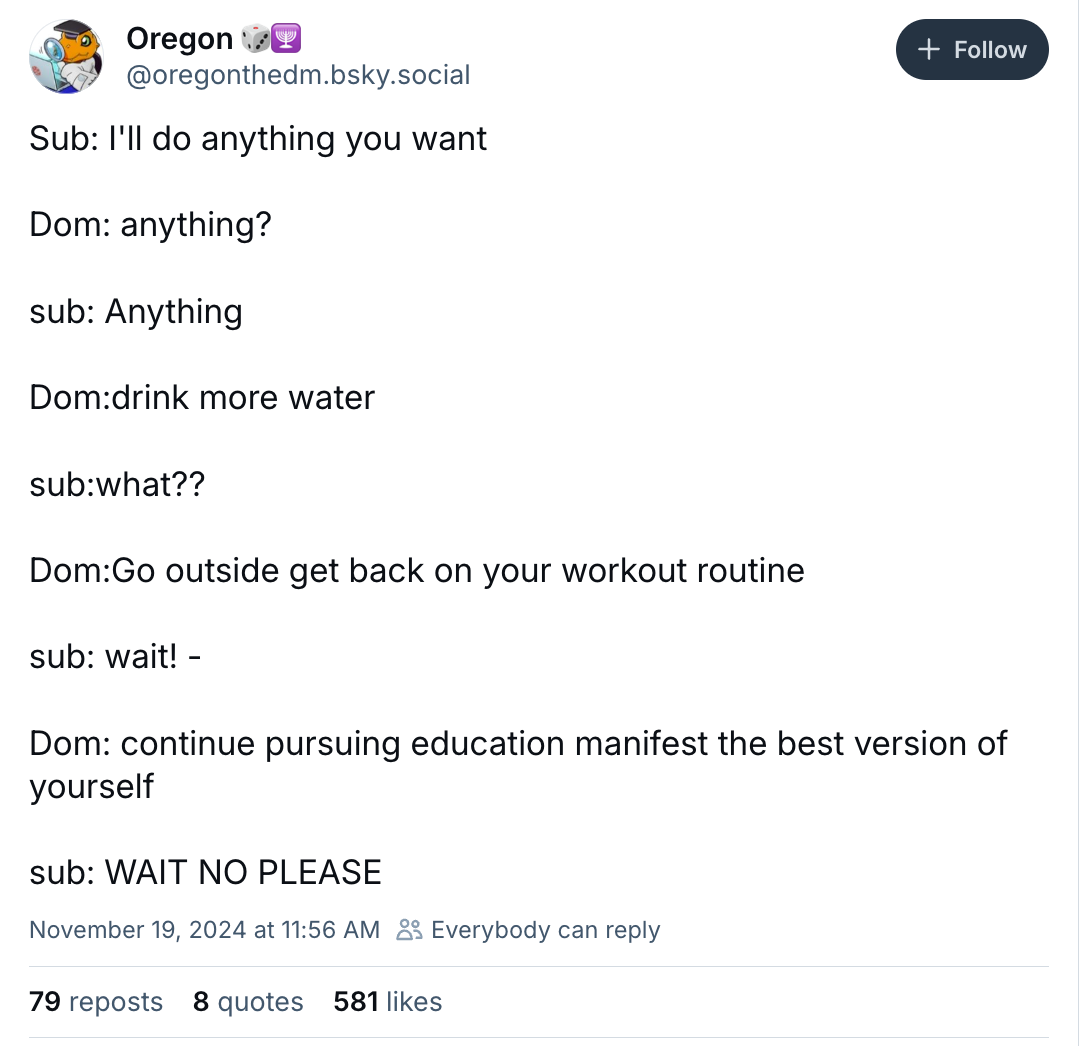
Drink
More people are “dropping out” of the “creator economy.” It’s strange to even refer to this as an economy; it’s more like something between a pyramid scheme and a lottery. The number of people who make money at all is so vanishingly small, and then people making livings are, well, lottery-winners.
Just a note to say that bathroom genital inspections (can’t even believe I’m writing that combination of words in 2024 in America) have never once protected anyone from assault, and only put any and all girl bathroom users at risk of being assaulted by the weirdo genital inspectors.
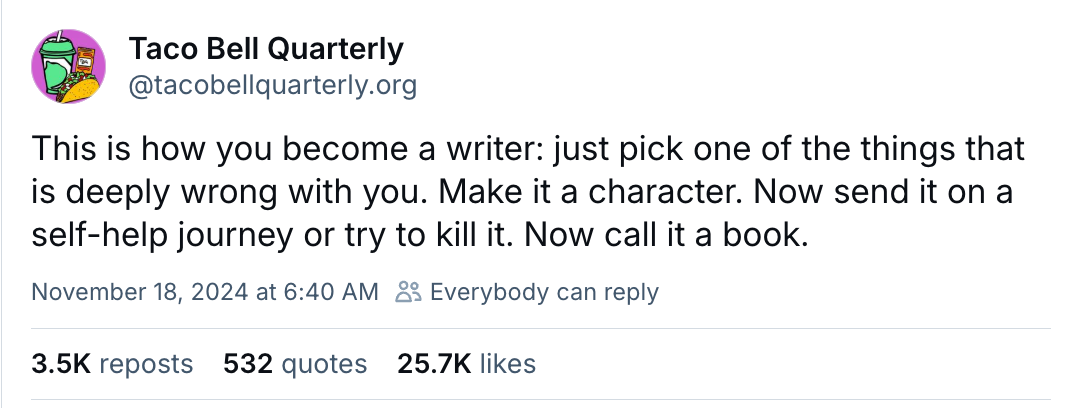
Rest
The End of Days Inn, a great Sarah Kendzior piece.
The oldest forest in the world is in upstate New York (real upstate New York, near Albany)(suck it, other regions).
Several times during the pandemic, I came close to eating the weeds in our Brooklyn backyard, which were pigweed, which is really a type of amaranth (not out of necessity, but just for something to do). Now I regret not trying it, because maybe we should all be eating the weeds.
Again I’ll claim I’m not a podcast guy, but here I have been listening to the Strong Towns Podcast, specifically "Walkable City Design is Critical for Economic Health" and "Recovering Addicts Are Having a Bottom-Up Revolution in This Small Kentucky Town".
Here’s a historical gem: a gripping, award-winning 1996 story about the malfunction of radiation-delivering software for cancer patients circa 1985:
The damage done by radiation depends upon its strength, what proportion of the body is exposed, and whether it strikes any vital organs. One thousand rads can be fatal if it is spread over the entire body. Physicist Still later estimated that Yarborough probably received between 15,000 and 20,000 rads on that dime-sized space … That night Still stayed late after work and tried to reproduce a beam that could have gone through a patient’s body … Whenever he changed any component of Yarborough’s prescribed treatment on the computer console, the beam collapsed … So the technician couldn’t have done anything wrong. The machine worked fine ….
Over the next few weeks Katie Yarborough’s body began to look as if a slow motion gunshot had gone through her chest and [out] her back. The site where the beam had entered was now a hole. Over the next few months surgeons twice tried to graft healthy skin over the wound but each time the grafted skin rotted and died … Katie Yarborough was the first of the Therac-25 accidents.
That’s all for this week! I love you for reading, but did you pre-order the book yet? Ok, thank you, let’s go—





Member discussion